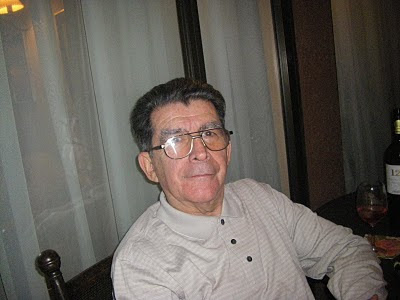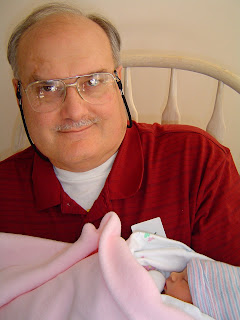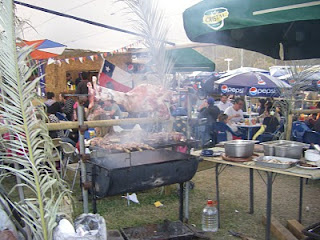A quick analysis of recovery efforts in the four key areas of health, transportation, housing, and education is indicative of the situation, now nine months after the quake. Recall that in February with winter almost upon them, the response to the earthquake and tsunami was first, understandably, one of immediate relief for the most affected, provision of a temporary roof over the heads of those left homeless, emergency health care and communicable and water-borne disease control in the affected population, makeshift arrangements so all school children could return to their schoolrooms at the start of the school year in March, and basic clearing and reopening of all major roads and bridges especially along the Pan American highway, “Ruta 5”.
The health situation was greatly assisted by the fact that the winter of 2010 was the most benign in the last four years. Temporary field hospitals were erected almost immediately in the place of hospitals destroyed in the earthquake in the worst affected areas of Bio Bio and Maule. There were no disease outbreaks in Chile over the winter and the general population escaped a serious outbreak of influenza that they had feared would occur. Though health care workers are still attending patients in very crude and uncomfortable field hospitals in some places, there are plans now to rebuild permanent hospitals to replace the ones destroyed. In the meantime nine provisional hospitals, called “Accelerated Construction” will be erected and begin functioning by May of 2011 in Talca(2), Curico, Hualane, Cauquenes, Parral, Chillan, Santiago, and Valparaiso. These provisional structures will replace the field hospitals, take only 90 days to put up, and last 5 years.
The housing sector is much more complicated. The emergency housing efforts, lauded immediately after the emergency, were partially successful in that everyone seems to have been provided at least a medi-agua type structure in time for the winter cold and rains, but these structures and the locations of the temporary camps where they were situated had inherent problems of potable water supply and sufficient waste management and sewage removal, especially in and around the larger towns of Cauquenes, Pelluhue, and Constitucion. The provision of permanent housing is complicated and has therefore been delayed due to the multiplicity of housing subsidy programs that apply depending upon income level and degree of loss, and further complicated by the intention of the national government and some local authorities to prevent reconstruction of housing on high-risk properties in the tsunami affected zones. And the budget authorities to fund the housing programs must be approved by a Congress with a majority of members from the opposition who are taking very seriously their new role of “opposition”. Again, the bottom line is that the programs are moving, but too slowly.
After the earthquake Ruta 5, the main north-south artery over which most passenger vehicle and trucking travel, was damaged in 300 places. Today that has been reduced to 20, but each of these 20 points slows down and adds costs to the important commercial transport that must get Chilean products to market and essential goods and services distributed throughout the country. If this situation lasts through the summer season (January through March) the tourism industry will suffer. The biggest infrastructure job is the ongoing reconstruction of the bridge over the Rio Claro, causing heavy traffic delays in this agricultural, industrial and touristic stretch of Chile.
As I reported in an earlier posting, the education sector received top priority attention from the Pinera government and the Minister of Education, Joaquin Lavin. After an initial suspension of classes for 1.25 million students,45 days after the quake all children were in school. Six months after the quake, 24 million dollars had been made available to repair over 74 schools and 300 day care centers, and erect 30 modular schools for students whose schools were destroyed.

One can only hope that the Chilean authorities will follow through on their promises and pronouncements and follow through on their plans to reconstruct the earthquake and tsunami affected areas of Bio Bio and Maule. Chileans have a right to be skeptical, though, if for no other reason than that too many of the people affected by the earthquake in the northern city of Tocopilla in 2007 are still living in ramshackle temporary shelters awaiting the promised relief from that tragedy. Because Bio Bio has the major city of Concepcion to lead the way, that region will most likely keep clamoring for attention and resources with some success. But the poorer neighboring region of Maule will very probably lag in the reconstruction and rehabilitation process. In this case, it appears that local civil group actions may be the best, most reliable source of assistance.

In Maule, there are many children who have been left homeless, orphaned or living away from their parents, and emotionally damaged by the terrible events they were victims to in February. Their emotional and social needs must be addressed. There are many local faith-based and community support groups that have formed throughout Maule to care for children in need. One organization that has gathered resources in the US to help the poorest and neediest children in Chile by providing resources to these local civic groups is the Chilean American Foundation (CAF), based in Washington DC.

During my visit in September to the Maule region, I went with my brother-in-law, Joaquin, to visit one of the groups receiving funding from the CAF, the Fundacion Mi Hogar foster home for girls in Pelluhue. This Center (and a similar one in Cauquenes also receiving assistance from CAF), do a magnificent job providing shelter, food, education, and love to young children whose parents are unable to care for them due to economic destitution, illness, incarceration, or drug rehabilitation. The children in these centers are so thankful for the little they have, and when I visited I could just feel the energy and optimism they have to confront their daily lives in spite of the lousy hand they have been dealt.

The CAF was approached for support from many more institutions taking care of Maule’s children than they were able to fund. For example, if they had the resources, CAF would provide support to a group of psychologists who have formed a mobile group that regularly visits the schools in Talca, Curico, Cauquenes, Pelluhue, and Chanco, helping small children who show signs of post traumatic stress (violent tendencies, withdrawal, recurrent night terrors, etc.), and help teachers and the children themselves recover from the effects of their tragedy. It isn’t just physical needs these people have…they have to return to a state of psychological normalcy but children, especially, need help to do this. Over the next few months and years, this type of intervention will prove to be highly critical for the young victims of the big Chilean earthquake and tsunami of February 2010. The Chilean American Foundation [www.chileusfoundation.org] is one organization that is following through on their pledge to assist over the long term. My observations in Maule confirm that their assistance is not only needed with urgency, but also greatly appreciated, especially by the children who are trying to put their lives back together in the face of great disadvantage.
Posted on December 6, 2010, in Leesburg, Virginia.




























